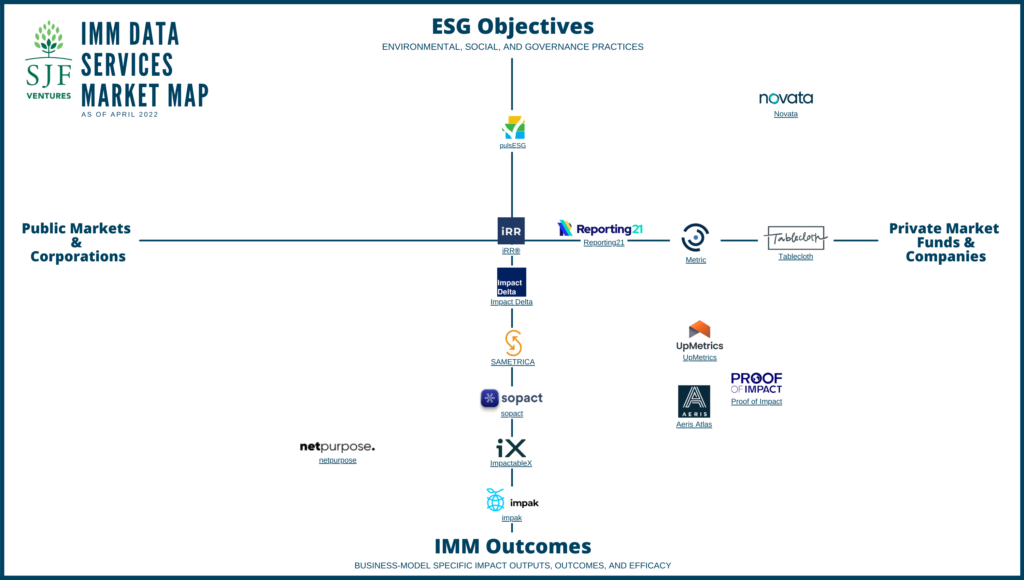
SJF Ventures Maps the Market: Impact Measurement and Management (IMM) Data Platforms
This case study documents SJF’s search for a new IMM technology solution and offers tools and resources for others pursuing next steps in their impact journeys.SJF Ventures Maps the Market: Impact Measurement and Management (IMM) Data Platforms
By Heather McPherson and Emma Sissman
I. Introduction
With the impact investing industry scaling rapidly and the alignment of purpose and profit propagating more widely, impact investors and other organizations have shown increased focus on tracking and improving impact outcomes and environmental, social, and governance (ESG) objectives. While data collection and analysis have been central to SJF Ventures’ impact approach throughout our history, the discontinuation of the Global Impact Investment Rating System (GIIRS) in 2019 and the rise of other impact measurement and management (IMM) tools and services prompted us to consider how a new third-party data platform might advance SJF’s IMM strategy.
Over the past year, we spent time exploring the growing landscape of impact measurement technology solutions. This case study outlines our approach from start to finish. We offer background on SJF’s IMM strategy; insight on our diligence and methodology for mapping the market; information on platforms and tools available today; criteria, both general and SJF-specific, that we used to assess our options; and, finally, outcomes and additional resources. While we have featured a subset of impact data solutions in this piece, our list is not comprehensive. Since each fund and organization is solving for its own needs, we encourage readers to adapt what we have shared in a way that is most useful to you and your work.
We are pleased to share that our team has ultimately selected a new, tech-forward solution that fits with our specifications, outlined in further detail in section V, and we hope that what we learned along the way will serve as useful guidance to others pursuing next steps in their IMM journeys.
II. Background on SJF’s IMM Strategy
As detailed in SJF’s 2020 Impact Report, our impact strategy is based on 22 years of impact investing experience and informed by leading impact frameworks. Historically, one framework utilized by SJF was GIIRS, or the Global Impact Investing Rating System, which was launched in 2011. The rating involved an evaluation of all portfolio companies’ impact performance using the B Impact Assessment (BIA), a tool comprised of 200 questions covering company practices related to governance, workers, community, environment, customers, and disclosures (of industries, practices, and outcomes), and a customized version of the assessment at the fund level. For private market investors and limited partners, GIIRS offered a third-party, standardized score to compare investment funds across different industries and geographies. For funds like SJF, the process provided a framework for collecting data, and the results offered valuable insight into portfolio-level and company-specific impact performance.
As a GIIRS Pioneer Fund, SJF started incorporating this annual assessment in 2011 as a core part of our data collection and measurement work. Tacked on to the BIA were two additional metric sets designed by SJF. Those included ~40 workforce metrics related to the diversity breakdown and employment classifications of portfolio company teams and a short list (fewer than 10) of key impact indicators (KIIs) per company. Over time, rather than prioritizing the measurement of only output and scale metrics, our team worked with portfolio companies to re-orient KIIs towards the social, economic, and/or environmental outcomes and efficacy proof points of each business.
When GIIRS was retired in 2019, we used the opportunity to reflect and refocus on the purpose of our data collection process: using the data to drive conversations and decision-making about where and how our team might deepen and/or broaden positive impacts achieved across the portfolio. Instead of immediately seeking a replacement rating or scoring system for GIIRS, we decided to create our own propriety metric set to roll out to portfolio companies. We revisited the BIA and made note of key ESG-related indicators most relevant to SJF’s IMM analysis and support to companies, then consolidated these with our workforce and company-specific KII metric sets as one streamlined survey. To create a flexible, customizable, and easy-to-use format, we chose Excel as our temporary data collection tool. While Excel served as a robust tool for both collecting impact data and assessing it, in SJF’s case, the growing file that housed over 20 years of impact data across multiple funds was becoming inefficient. This precipitated our search for a new technology product and partnership to support the next chapter of SJF’s IMM strategy.
III. Mapping the Market
We experienced three observations as we delved into our process of mapping the market. First, the range of offerings was extensive (and growing!), and the versatility across products was impressive. We quickly recognized the need to be upfront about our requirements and constraints to narrow down the options that accurately addressed our particular pain points. Second, it was immediately clear that we were not alone in our exploration. Our participation in regular IMM-focused peer learning workshops through Impact Capital Managers (ICM), a network of private capital fund managers dedicated to market-rate returns and impact, made it clear that our industry peers and partners were seeking the same kinds of tools. Most colleagues were motivated by the potential to organize a previously unstructured or informal IMM practice; some were responding to increased reporting requests; and others were acting out of precaution given new regulations, for example, ESG disclosure obligations of the Sustainable Finance Disclosure Regulation (SFDR). Third, we were all approaching our searches with limited direction and structure. In conversations with peers, we learned that we were weighing similar decisions about integrations and affordability yet none of us had formalized any kind of roadmap to guide our decision-making.
Given the rise of IMM tools and platforms, we relied on targeted outreach and introductions through colleagues at peer funds, friends of SJF, and industry alliances such as ICM to identify a curated list of options. We then participated in detailed introductory calls with over 15 providers in 2021. To guide our information-gathering and questions during these conversations, we compiled a core list of criteria, similar to a rubric, to help differentiate one platform from another.
- Targeting of customer market: When speaking with providers, we noticed a clear delineation between those with familiarity of ESG ratings for public markets and those with experience in impact metrics relevant to private equity and venture capital investors. In general, it seemed that platforms designed for public market clients with an ESG focus were working to extend their capabilities for private market use. We observed two apparent disadvantages with this strategy – prohibitive cost structures for funds (that threaten to trickle down to portfolio companies) and an incomplete understanding of how and why private investors measure company-specific impact metrics. It was important to us that the provider have a depth of knowledge about impact investing and existing industry frameworks relevant to our work.
- Ability to send data surveys directly from platform: To transition away from Excel spreadsheets, we asked about the capability to build, share, and collect surveys directly through the platforms. We found this to be a standard offering. For further differentiation, we inquired about the options for survey customization, frequency (e.g., quarterly vs. annual vs. point in time), and access for multiple users (assuming several different team members are inputting data at a portfolio company).
- Capacity to manipulate data for analysis within platform: At a minimum, we wanted to be able to filter the collected data by year, fund, portfolio company, sector, and metric, as well as incorporate some custom aggregation analyses. If these functions were not already possible in a platform, we found that most service providers could easily add these filtering and grouping capabilities.
- Data visualization and graphing capabilities: This was standard across data collection platforms, although each offered its own unique aesthetic. The ability to embed charts and dashboards into websites directly was one area of differentiation that we found interesting.
- Integration with industry frameworks and adopted norms: Across the platforms, we heard an acronym soup of potential integrations. For the most part, the possible framework integrations matched the needs of target audiences. They included, but were not limited to, the UN Sustainable Development Goals (SDGs), the Sustainability Accounting Standards Board (SASB), the Impact Management Project (IMP – which recently concluded its valuable consensus-building work and launched its Impact Management Platform), and the Impact Reporting and Investment Standards (IRIS+) Catalog of Metrics. For climate and greenhouse gas (GHG)-related disclosures specifically, the GHG Protocol and the Task Force on Climate-related Financial Disclosures (TCFD) were highlighted, among others. While there are important compliance and regulatory reasons to be tracking certain industry frameworks, especially related to the EU taxonomy for sustainable activities (of which several environmental objectives are being applied as of January 2022), each fund has the discretion to weigh the importance of integrating with various industry-wide frameworks. Please refer to the Appendix for links to those referenced above and additional resources.
- Benchmarking of data against external comparables and across portfolios: We considered the option to leverage public market comparisons across various industries and sectors to benchmark company performance, with the understanding that this matching may not be perfect. We also revisited how we might better compare and benchmark portfolio company ESG practices to better understand what is working well at one company and how those lessons learned might benefit the full portfolio.
- Differentiated functionality: In conversations with each provider, we heard about unique functionalities. For the high-level summary of IMM data services platforms included below, we asked that service providers self-identify these distinctions.
Price point was one last key consideration, and while not expanded upon in the list above, we would be remiss not to mention the importance of finding alignment on cost and contract structure. Not only did these criteria help us organize our notes during introductory calls, but they also collectively provided a useful structure for consolidating information about each platform. As we started to build out this framework internally, we found ourselves referring to this index frequently during dialogues with our peers about IMM data services tools and services. This prompted the idea of creating an accessible industry resource. We invited all providers that were part of our search to contribute input, and the responses we received are consolidated into SJF’s IMM Data Services Platform Summary (Figure 1) below.
Figure 1. SJF’s IMM Data Services Platform Summary (as of August 2022) – Click here or on the graphic below to download a high-resolution PDF version.
It is important for us to acknowledge that the list of platforms in this chart is not comprehensive and represents a subset of a large and expanding universe of impact data solutions. We have listed some additional IMM platforms that we know of in the Appendix and welcome the input of others to continue developing this resource. Further, we understand that portfolio reporting technology providers that have historically addressed financial management needs are also exploring how to best offer ESG tools. Over time, these companies may also become more relevant to the IMM platform landscape.
An additional consideration not captured in the table above is that many providers we spoke with also offer wrap-around IMM services – whether independently or in conjunction with impact data platform solutions. These services might include items like consulting, training, third-party verification, and/or capacity building targeted to different phases of an organization’s impact or ESG journey. We have included information in the Appendix on two such independent service providers, Credo ESG Solutions and BlueMark, as well as additional IMM resources.
IV. Evaluation Process Through Lens of SJF-Specific Needs
After identifying the list of criteria for a more generalist review of platform options, we shifted our focus to considering the most appropriate product fit for SJF’s specific needs.
First, we used what we learned in the IMM Data Services Platform Summary to map our perspective of each provider’s focus on (a) ESG objectives versus IMM outcomes, and orientation towards (b) public markets and corporations versus private market funds and companies. SJF’s IMM Data Services Market Map (Figure 2 below) depicts each platform’s concentration across these spectrums, with an emphasis on the lower right quadrant given our interest in tracking impact outcomes and ESG practices at portfolio companies.
Second, we outlined the pros and cons of our current versus ideal IMM processes and identified five areas of potential improvement that guided our final assessment: time savings, technology, institutional knowledge, data analysis, and added value for portfolio companies.
- Time savings: The current annual impact assessment process is manual and requires the engagement of several team members over many months. The time spent on data collection takes away from ongoing support of SJF’s portfolio companies and our larger efforts to engage on impact acceleration projects to deepen and/or broaden the outcomes achieved by our companies.
- Tech-forward solution: As easy and functional as Excel may be, we were excited about the possibility of exchanging tricky, complex formulas for the support of technical experts. By automating the IMM process, we could alleviate the required manual analysis.
- Institutional knowledge: Three key advantages of a data platform are cataloging, consolidating, and storing. These are important for SJF as we iterate on our impact data collection process over time, focus on consistency of use, and ensure knowledge transfer across team members over time.
- Data analysis: We have been limited in our ability to analyze and visualize data in different capacities within Excel. Ideally, a platform would allow us to creatively flex the possibilities of searching, viewing, and sharing data across any combination of year, company, fund, sector, and metric.
- Value for portfolio companies: We felt strongly that the right database would allow portfolio companies access to year-over-year data, not only to inform internal IMM practices but also to drive meaningful decision-making and actions resulting from participating in SJF’s survey. We have seen demonstrated results across our portfolio that in areas such as employee retention, customer loyalty, marketing, and ultimately acquisition, driving deeper and/or broader impact can lead to enhanced business value and success. (For more examples of how operating with impact objectives can drive financial returns, please refer to The Alpha in Impact report from Tideline and ICM.) Finally, we hoped that companies might have access to sector-specific industry benchmarks and other tools and surveys, such as an employee diversity, equity, and inclusion (DEI) questionnaire. This point became a key differentiator as our search advanced.
Identifying the challenges of our IMM process allowed us to categorize opportunities as evaluation criteria, and then concentrate on those areas of significance across the product options.
Figure 2. SJF’s IMM Data Services Market Map (as of August 2022) – Click here or on the graphic below to download a high-resolution PDF version.
V. Outcome
Having thoroughly analyzed our targeted platforms using the core criteria in the IMM Data Services Platform Summary and the SJF-specific needs, we moved forward with our final decision-making. We chose two finalists to engage through deeper diligence and customized demos: Metric and UpMetrics. Both are highlighted in Figures 1 and 2 and described in greater detail below. While these two companies were the right fit for SJF specifically, there are many other effective and robust solutions that might be better suited for different organizations. The IMM Data Services Platform Summary, IMM Data Services Market Map, and Appendix incorporate many options, and we will continue to add to these resources over time.
Metric: Metric provides analytics software to measure, benchmark, and improve ESG performance in private markets. For venture capital and private equity firms, the platform streamlines end-to-end ESG measurement and management across the portfolio. Investors can customize the standard ESG and impact framework, and portfolio companies can use Metric’s tech-enabled data collection process to minimize time spent on reporting. Both investors and companies receive ESG and impact data, analysis of financial operational risk, peer benchmarks, and tailored improvement strategies.
Metric is differentiated in the depth of portfolio company functionality available to measure and improve ESG performance. The platform includes a corporate GHG emissions calculator and standardized DEI survey, and companies can upload raw files (i.e., utility bills, HR data) without any prior analysis to accelerate data collection. After analyzing company performance relative to industry benchmarks, Metric recommends actionable improvement strategies, shares project efficacy data, provides implementation partners, and tracks progress. As demands for transparency escalate, Metric provides a system for ESG performance management, continual improvement, and compliance with external disclosure requirements.
UpMetrics: The UpMetrics platform is designed specifically with the social sector in mind, helping clients collect and analyze data to measure impact, track progress towards goals over time, and combine quantitative and qualitative data to tell compelling stories that inspire change. In addition to the platform, the UpMetrics services team – consisting of social sector and data experts – works alongside clients to ensure they get the most out of their data.
UpMetrics partners with impact organizations (including investors, portfolio companies, foundations, and nonprofits) to help develop and track metrics tied to select outcomes, SDGs, ESG, and DEI efforts – driving learnings and streamlining data collection, analysis, and reporting. The team implements a proprietary “DeCAL” methodology to help clients achieve their IMM goals: Define, Collect, Analyze, Leverage. First, the team works with a partner to help define success metrics for the firm. This includes creating or enhancing KPIs by impact focus area, identifying key data sets, and establishing goals and benchmarks. Second, UpMetrics streamlines the data collection process. The platform centralizes both qualitative and quantitative data across multiple sources via third-party integrations and easy upload functions. UpMetrics’ extensive library of public data sets also enables clients to incorporate outcomes-focused data without placing additional burden on their partners and investees. Third, the team delivers tailored, filterable, and shareable dashboards that become powerful storytelling assets externally while also empowering key decision makers with the ability to effectively analyze their data. Finally, UpMetrics and their team of sector experts will advise clients on how to best leverage their quantitative and qualitative data to deliver insights and drive impact.
We were incredibly grateful to have the choice of working with the exceptional teams at Metric and UpMetrics. Ultimately, we decided to move forward with UpMetrics, and we are excited to kick off SJF’s 2022 impact survey with the guidance and expertise of our new partner.
VI. Looking Forward
As we onboard our new IMM platform powered by UpMetrics, we are already thinking about how the benefits of time savings and technology will allow us to add more value for our investors and portfolio companies. For SJF’s limited partners, we plan for more regular reporting and increased data transparency and access. For portfolio companies, the benefits include access to a repository of historical data, benchmarking capabilities, and analysis and visualization tools to better understand their impact and ESG practices and areas for improvement. In the longer term, we are excited about how we might leverage the platform to integrate additional sets of data, including carbon accounting information and financial data, and potentially explore further integrations with technology employed in other functional areas of our work.
We also remain interested in learning about new IMM platforms. Our exploratory process might have concluded, but we continue to be invested in building out industry resources, like the IMM Data Services Platform Summary and Market Map, and sharing what we learn.
To contribute information about a platform that is not mentioned or provide feedback, please contact Heather McPherson (hmcpherson@sjfventures.com) and Emma Sissman (esissman@sjfventures.com).
~
Acknowledgments:
Thank you to all the IMM leaders and experts who shared their work and time with us. We were so grateful to observe first-hand the passion and purpose behind every platform.
About SJF Ventures:
SJF Ventures is a venture capital firm that seeks superior returns by investing in high-growth, positive impact companies. The firm has been at the forefront of impact investing since 1999, backing visionary entrepreneurial teams working in clean energy and climate tech, circular economy and supply chain, mobility and govtech, sustainable food, health, education, and future of work. SJF is also a co-founder of Impact Capital Managers, a network of 76 impact-focused private equity and venture capital funds representing more than $17 billion in assets under management. Please see www.sjfventures.com for more information.
~
Appendix:
Additional IMM Platform Resources
As previously noted, we would value input from other companies that have not yet been included in the above list, IMM Data Services Platform Summary, or IMM Data Services Market Map. This is an evolving resource, so please reach out to SJF regarding additional platforms, updates to the information listed, or with any other requests or questions.
Additional IMM Resources
- 60 Decibels: 60 Decibels, which spun out of Acumen in 2019, is a global, tech-enabled impact measurement company that brings speed and repeatability to social impact measurement and stakeholder engagement. They provide genuine benchmarks of impact performance, enabling organizations to understand impact relative to peers and set performance targets. The company recently raised Series A funding “to accelerate adoption of global benchmarks for impact performance, based on data gathered directly from end stakeholders.” Learn more here.
- BlueMark: Founded in January 2020 as a spinout of Tideline, and with a mission to “strengthen trust in impact investing,” BlueMark provides impact verification services for investors and companies. BlueMark defines impact verification as “the assessment of an investor’s impact management practices or impact performance against specific industry standards.” Their verification services are structured around two key pillars of accountability for impact: 1) Impact Management Practice – the extent to which an investor or company has the systems, processes, and capabilities to contribute to achieving the intended impact, and 2) Impact Performance – the extent to which an investor or company has achieved the intended impact results. BlueMark draws on a range of industry standards, frameworks, and regulations for its verification methodology, including GRI, IMP, OPIM, PRI, SDGs, and SFDR.
- Credo ESG Solutions: Credo provides a full range of advisory services to private equity and venture capital firms and their portfolio companies to satisfy market demands for transparency, measurement, and improvement in ESG performance. Credo’s ESG-focused services include training, diligence, reporting, investor assessment and fundraising support, program management, improvement planning and implementation, and search services for board diversity improvement.
- Impact Management Platform: The Impact Management Platform is a collaboration between partner organizations, all of whom are leading providers of sustainability standards and guidance to coordinate efforts and mainstream the practice of impact management. The Platform will be overseen by a steering committee comprised of the IFC, OECD, UNDP, UNEP FI and UNGC.
- Impact Measurement & Management for the SDGs: This free Coursera training is sponsored by the United Nations Development Programme (UNDP) and produced by the Center for the Advancement of Social Entrepreneurship (CASE) at Duke University’s Fuqua School of Business. It addresses strategies and best practices for both enterprises and investors looking to strengthen their impact management and contribution to the SDGs. It also includes lists of impact data platforms for enterprises and investors.
Key Acronyms
- BIA: B Impact Assessment
- CDP: Formerly the Carbon Disclosure Project.
- ESG: Environmental, Social, and Governance
- EU Taxonomy: The EU Taxonomy Info Portal has information on the timeline, application of the EU taxonomy for companies, and application of the EU taxonomy for financial institutions.
- GHG: Greenhouse Gas. The Greenhouse Gas Protocol provides standards, guidance, tools and training for business and government to measure and manage climate-warming emissions.
- GIIN: Global Impact Investing Network. The GIIN has a “Getting Started with Impact Measurement & Management (IMM)” section on their website that also includes IMM Tools & Resources.
- GIIRS: Global Impact Investment Rating System
- GRI: Global Reporting Initiative
- ICM: Impact Capital Managers
- IFC: International Finance Corporation
- IMM: Impact Measurement and Management
- IMP: Impact Management Project
- IRIS: Impact Reporting and Investment Standards (hosted by the GIIN)
- KII: Key Impact Indicator
- OECD: Organization for Economic Co-operation and Development
- OPIM: Operating Principles for Impact Management
- PRI: Principles for Responsible Investing
- SASB: Sustainability Accounting Standards Board
- SDGs: Sustainable Development Goals. For an overview of how SJF maps its portfolio companies to the SDGs, please refer to this case study.
- SFDR: Sustainable Finance Disclosure Regulation (overview by KPMG)
- TCFD: Task Force on Climate-related Financial Disclosures
- UNDP: United Nations Development Programme
- UNEP FI: United Nations Environment Programme Finance Initiative
- UNGC: United Nations Global Compact

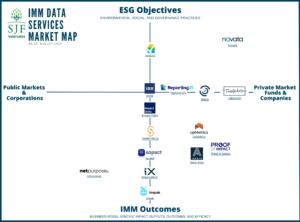





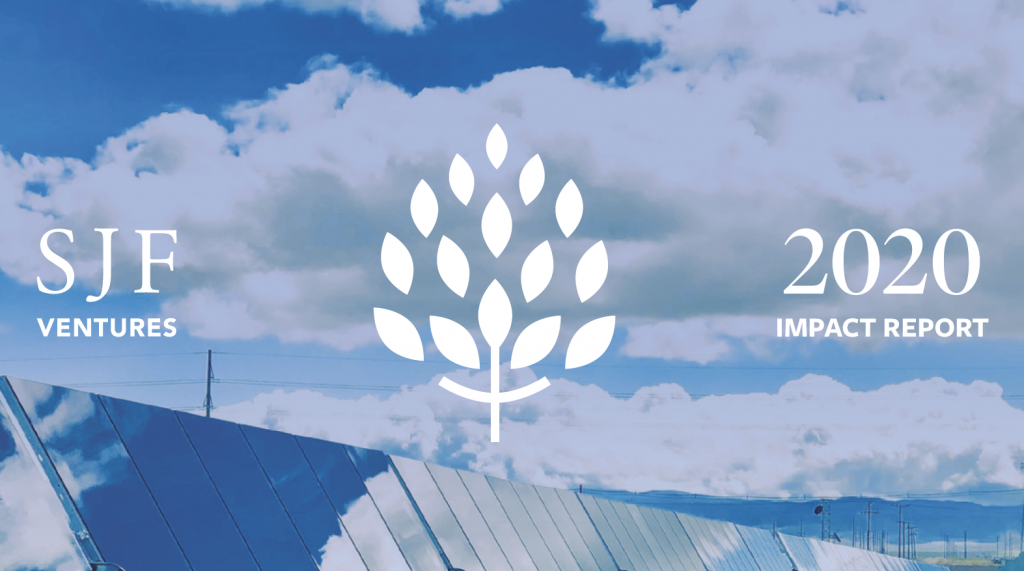






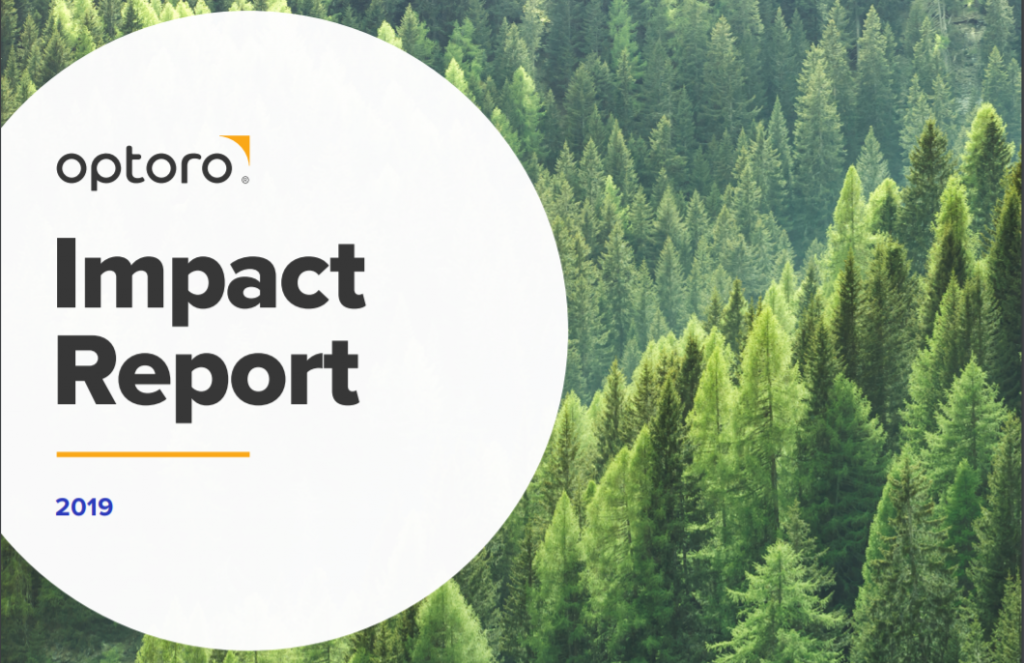



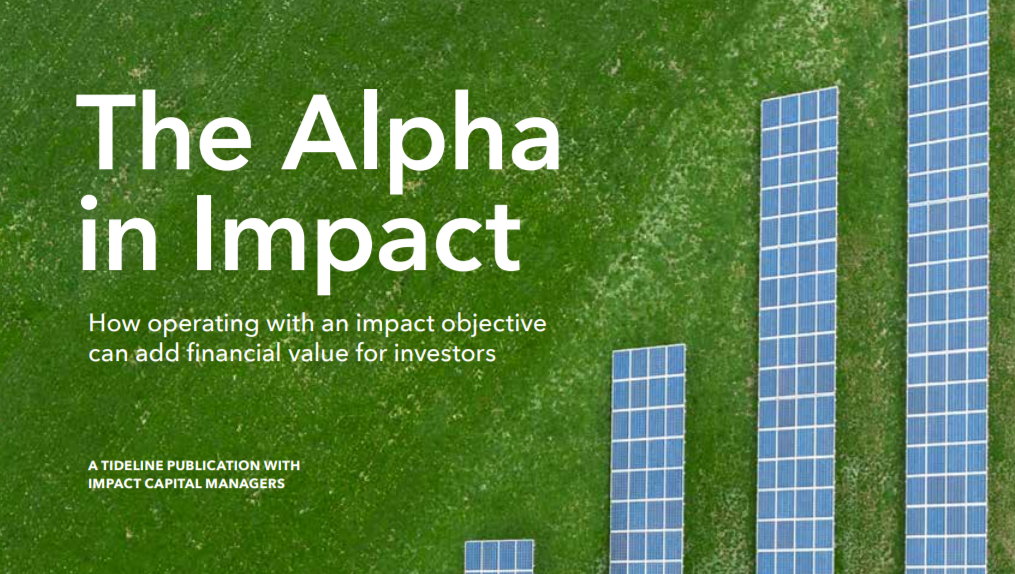























 © Copyright 2024 SJF Ventures
© Copyright 2024 SJF Ventures